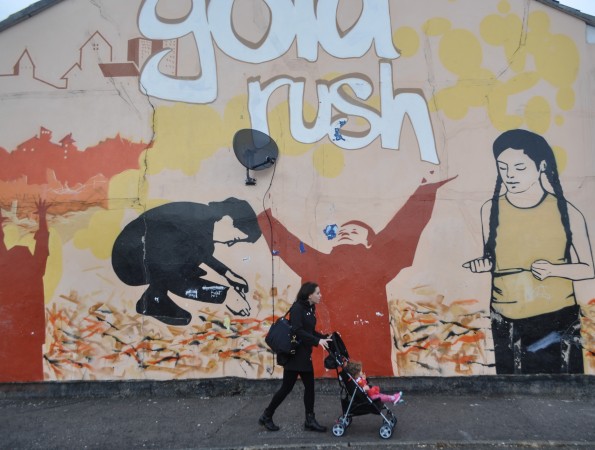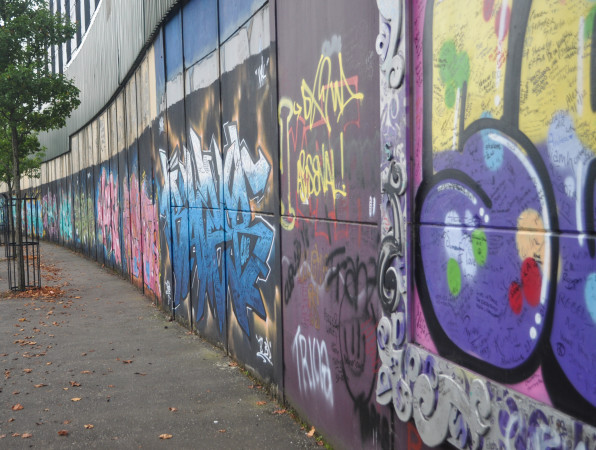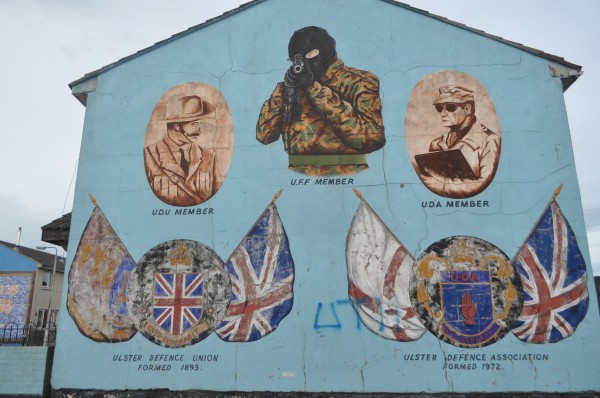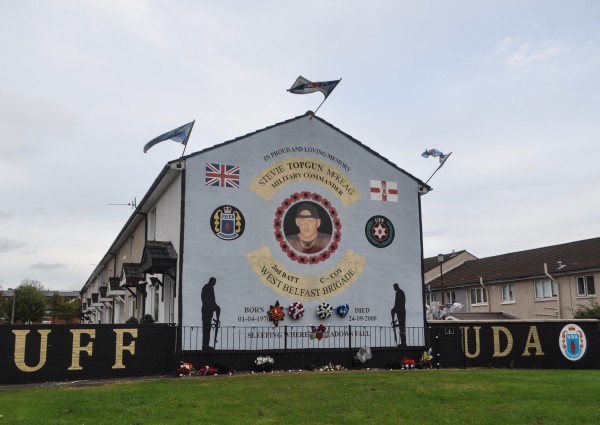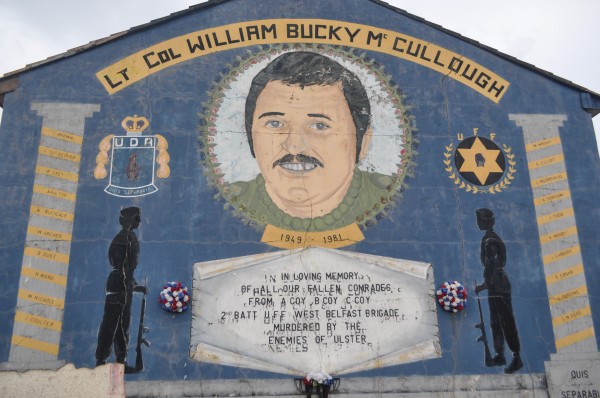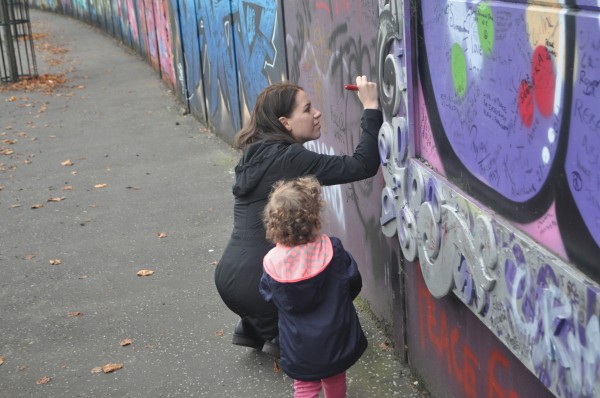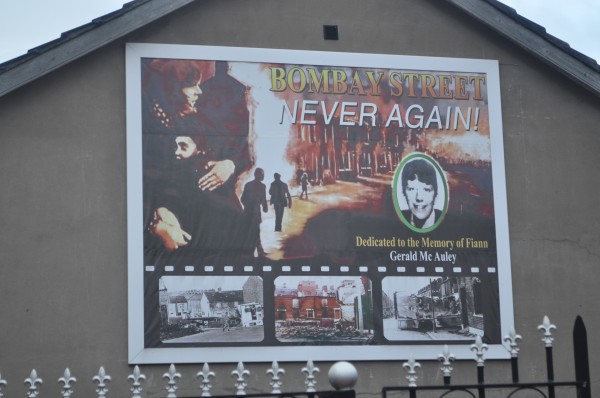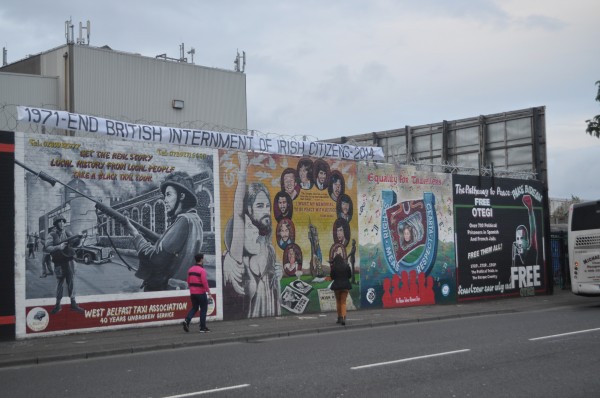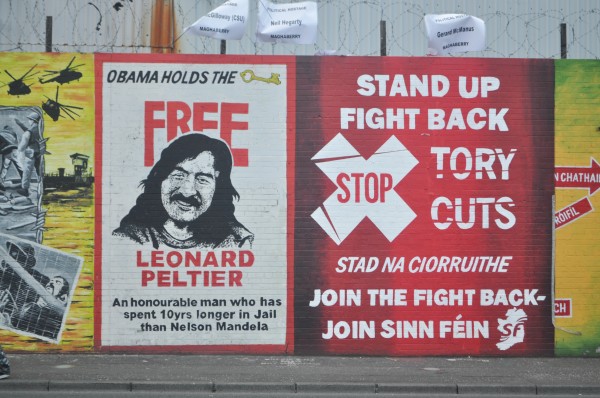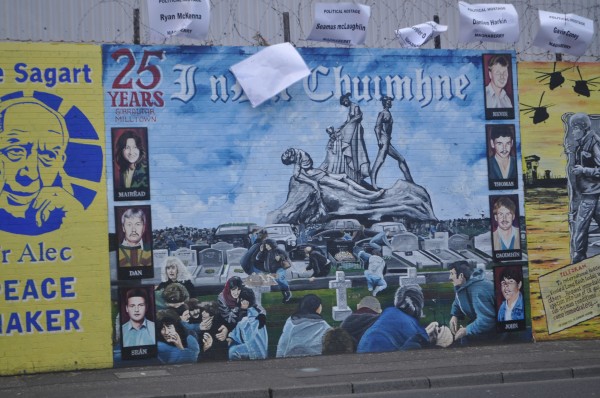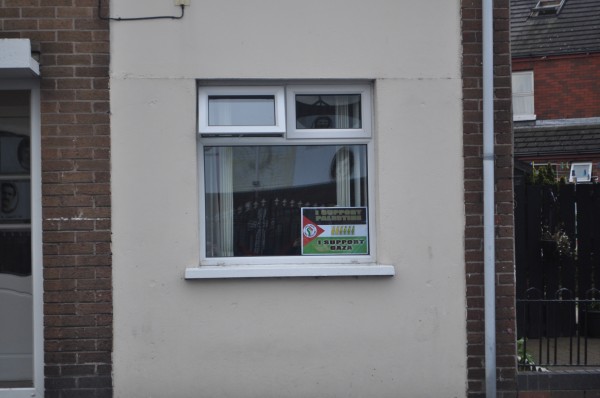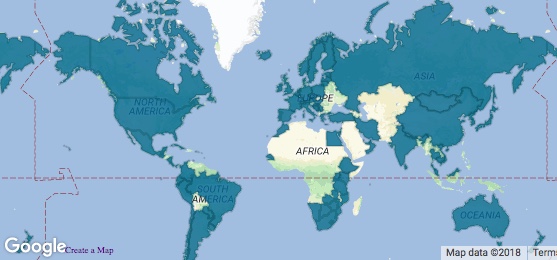Did you know that Belfast is a city divided? Still? I didn’t.
Watching TV as a child and teenager, I can remember a backdrop of both violence and positive change across the world: the end of apartheid, the fall of the Berlin Wall, the Oslo accords and the Good Friday Agreement. These resolutions seemed to halt the stream of images and reports of terrorist attacks that began generations before. Growing up, it had seemed “business as usual” for places like Northern Ireland to be violent each and every day. But then Clinton came along and it was all over, right?
Well I cannot speak for the residents of Belfast, but I did find it hard to believe that the Troubles were a thing of the past while looking at the physical barriers that still separate Catholic and Protestant sides of the city in 2014. Yes, in parts of the city there are gates and there are walls. Some gates are locked just overnight while others shut on Friday and do not re-open until Monday.
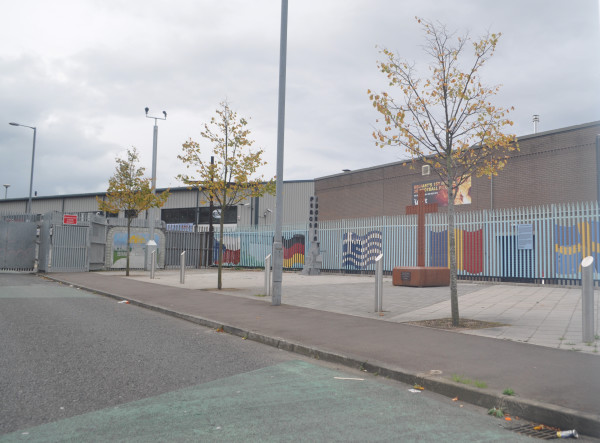
Peering through the locked gate from the Protestant side of the city. This land is a buffer zone between Catholic and Protestant neighborhoods. You can see the entrance to the Catholic side in the left of the photo.
A Political Tour of Belfast
Right up until we loaded ourselves into Stevie’s blue taxi, we thought that our Political Tour would take us to historical sights. This was, of course, true, but we had no idea that the Troubles were still very much a part of day-to-day life in Belfast.
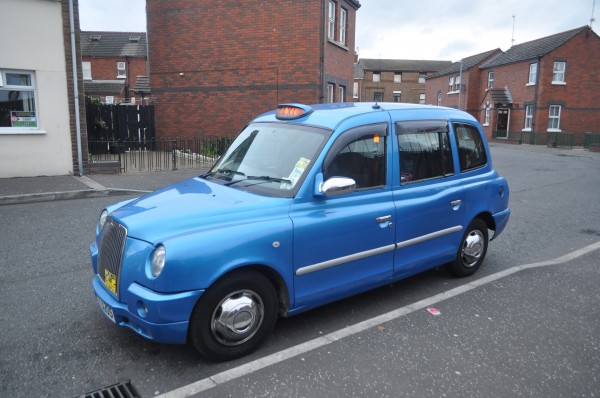
The walls and gates that separate the city are actively enforced and welcomed by the city’s residents.
Belfast is a safe city, as Stevie explained, but the residents are quite content to live separately. In parts of the city this may mean segregated neighborhoods with no clear delineation but in one specific part of the city, physical walls divide the two sides. Catholics on one side, Protestants on the other. More accurately, those who consider themselves to be Irish on one side (nationalists), and those who feel loyal to the crown on the other (unionists). Residents work alongside one another in the city center. At night, they retire to their own communities. Over 90% of schools are segregated, passing the division line down to the next generation.
Shankill Road
The first stop on our tour was to the Shankill area of Belfast, a loyalist (unionist, Protestant) neighborhood just a short drive from our hotel, the Europa, located in the city center. The look of the area was working class, with row houses and few trees, only made more dismal by the grey sky and threat of rain. It was late afternoon on a Sunday, so there were not many residents walking about. Stevie parked the taxi and we began to walk around the neighborhood. Along the way he explained the murals that covered each and every one of the buildings.
If these images don’t terrify you, you are much braver than I! Along with the glorification of fallen heroes (remember, one side’s heroes are the other side’s criminals), the images are meant to spark fear in the very core of anyone walking through this neighborhood – fear of a transgression against the loyalist agenda and of collaboration with the other side.
I cannot imagine that any healing or forgiveness can begin to happen unless these images are removed. But as Stevie said, the residents of these homes have virtually zero chance of that happening. If you aren’t happy with a mural on the side of your house, you should probably just move. The images are created by convicts who were freed as a contingency of the Good Friday Agreement. They have perfected their art while serving time at The H Blocks – a high security prison used during the Troubles.
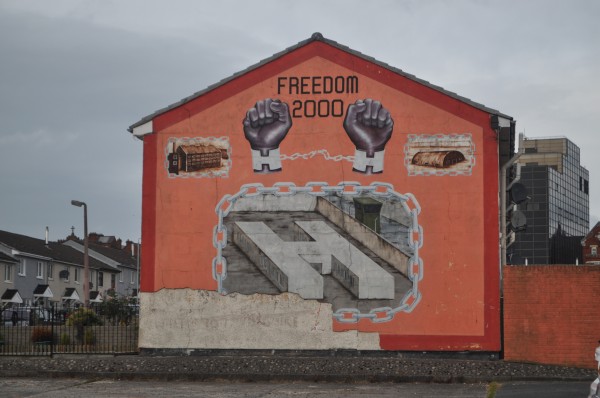
The Peace Walls
Peace Wall is quite a misleading term. These walls, also called Peace Lines, do not commemorate peace. They aren’t there as a historical artifact of times gone by. They have been in existence since the start of the Troubles and have only ever grown taller and more numerous across Belfast and other cities in Northern Ireland. They exist to keep the neighborhoods safe from attack from the other side by dividing the city. They indeed serve their purpose, and for that reason they continue to exist. This does not mean that the walls can serve as a replacement for integration. I know that sounds extremely naive, but I believe walls are notoriously on the wrong side of history.
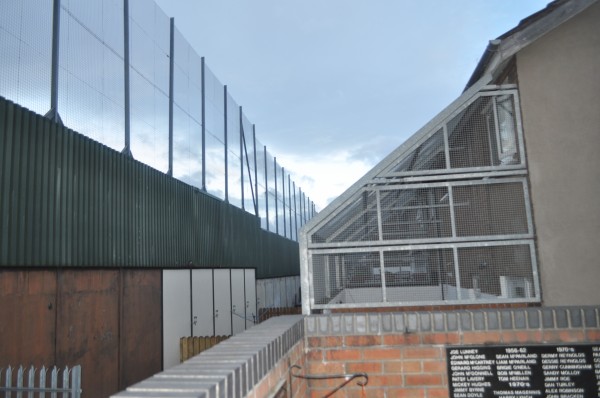
The Peace Wall as seen from the Catholic side. Homes are also fenced so as to minimize the effects of potential molotov cocktails that may be tossed over should the peace suddenly deteriorate.
It is certainly worth noting that although the number of walls has almost tripled since the start of the Troubles, there is a plan to remove all walls by 2023.
Falls Road
As we crossed over to the Catholic neighborhood in West Belfast via a road not blocked by wall or gate, we entered the “other side” so to speak. Again, we were in a working class neighborhood. The homes were small, closer together, although the lack of barren land between buildings made things feel a bit more like an actual neighborhood. We drove along Bombay Street, which was burnt to the ground at the start of the Troubles in 1969.
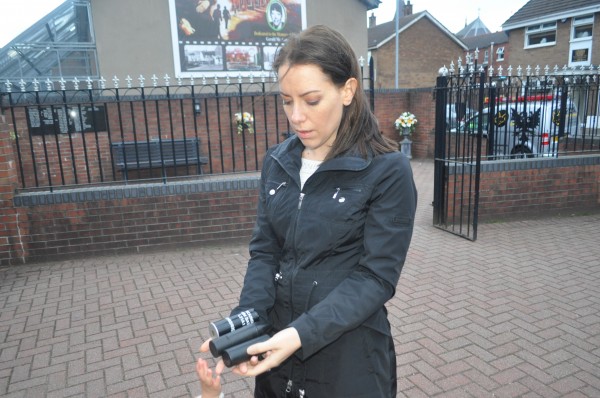
Holding a British Forces rubber bullet. This type of bullet killed many a civilian during the Troubles due to misuse.
The general feeling of this neighborhood was markedly different from that in the Shankill neighborhood. The nationalists/Catholics are a people who feel oppressed. They remember their deceased, they side with the “underdogs” of the world. They have the advantage that their cause was started in the 1960s on ethical, moral grounds. They began by fighting for their civil rights, and not by defending their position as the ruling class. From the early days, atrocities have been committed on both sides, but the feeling in the air on Bombay Street still holds those early goals of equality.
In the end, Stevie told us if he was Protestant or Catholic. I won’t spoil it here. I will tell you that he lives in one of the very few integrated neighborhoods in the city and sends his children to an integrated school. He doesn’t want the walls. It is probably too late for much of the current adult generation, so the hope no doubt lies in the city’s children. Hopefully they can see a picture larger than that which is painted onto the side of their homes.
Overall, we loved our time in Belfast. We came to learn about the city’s tumultuous history and left with a far more interesting experience than we ever anticipated having. It’s also worth saying that at no time did we ever for a minute feel unsafe and honestly consider the Northern Ireland capital to be one of the most interesting cities we have ever visited. Belfast also made a great jumping off point to explore the Causeway Coastal Route and Giant’s Causeway!
**We highly recommend booking this tour while visiting Belfast. Stevie is an exceptional guide and we were captivated by the sights and by his stories. http://belfastblackcabtours.co.uk/ Ask for Stevie **

